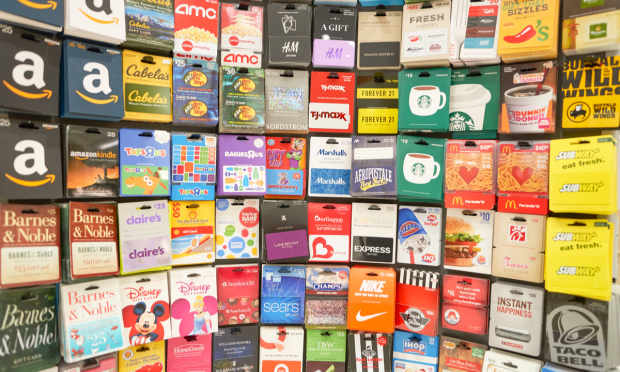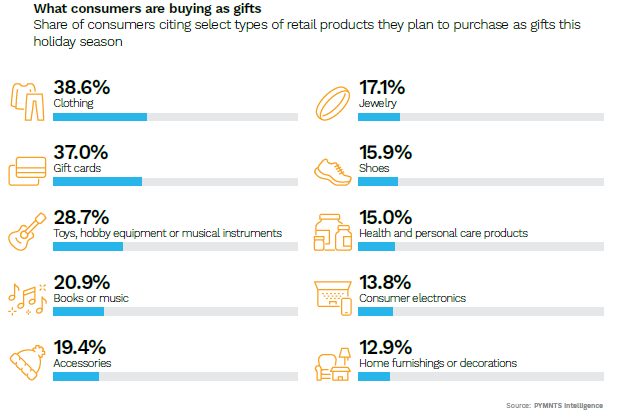Digital Gift Cards Popular as Consumers Balance Giving and Budgeting This Holiday

Amid the festive cheer, the holiday season is also accompanied by economic uncertainties and inflationary pressures. Consequently, numerous consumers in the United States are gearing up to reduce their spending this year.
However, they are not willing to skimp on gifts and are finding ways to make ends meet by trimming other seasonal expenses like travel and dining out, as detailed in a recent survey conducted by PYMNTS Intelligence and i2c collaboration, titled “The Credit Economy: How Consumers are Approaching Holiday Spending and Travel.”
According to the survey’s findings, consumers plan to reduce their non-gift holiday expenses by 26% compared to last year. On average, consumers anticipate spending about $860 this year on non-gift holiday purchases, compared to $1,160 in 2022. Consumers earning more than $100,000, who typically spend the most on the holidays, also plan to trim their non-gift holiday purchases by $500 this year.
Examining the data further reveals that personal finance considerations heavily influence consumers’ spending decisions, especially during the holidays. For example, only 1 in 4 respondents plan to travel for the holidays, with an average anticipated spending of $1,950.
The primary drivers for spending cuts include heightened costs, with 57% attributing reduced holiday spend to high prices, and 52% to personal finances. Gen Z consumers, however, are outliers, with some planning to increase gift spending due to job stability or perceived financial stability.
To counterbalance rising prices, 9 out of 10 holiday shoppers plan to take some action. Most consumers intend to offset the impact of rising prices by budgeting, reducing overall spending, or picking up additional work shifts.
However, spending on gifts is projected to rise modestly year over year across income levels, with an average expenditure of $1,000. This indicates that consumers are prioritizing gift-giving traditions while making adjustments in other areas of their holiday budgets.
When it comes to holiday gift choices, gift cards emerge as the second most favored retail gift option during the holiday season, with over a third of shoppers intending to buy them.
This surge in popularity is evident in the recent collaboration between payments firm InComm and Venmo to enhance that company’s digital gift card offering by enabling eligible users to personalize gifting occasions with popular gift cards brands directly via the app.
“For several years running, our annual holiday study has found that gift cards top the list of items that gift-givers anticipate purchasing for the holiday season,” Brian Parlotto, executive vice president at InComm Payments, said in a press release, per PYMNTS.
Clothing remains the top choice across all groups, with 39% planning to gift clothing this season. Toys, hobbies, or musical instruments come in third at 29%. Non-retail gifts like restaurant food (at 28%) and tickets to live events (at 17%) are also quite popular.

In terms of payment methods, credit cards remain the most popular type of credit product used for all holiday purchases, with 3 in 4 consumers planning to cover their expenses this way. Credit card usage increases with annual income, and younger consumers opt for other credit products like buy now, pay later (BNPL). Debit cards and cash are the leading alternatives for those who choose not to use credit products to pay for travel.
In summary, consumers are adjusting their holiday spending and travel strategies due to economic constraints. Even though there’s an anticipated decline in overall spending, people are emphasizing gift-giving while cutting back on other holiday costs to manage their budgets. For retailers and financial service providers aiming to remain competitive, understanding and accommodating these shifting consumer behaviors will be pivotal in reshaping the holiday retail environment.

